Shrimp farming is a big business. But it’s not just about raising shrimp for food. Shrimp farming is also an important part of the global economy, with the industry worth billions of dollars annually. So, if you’re considering starting a shrimp farm, you must have a business plan. This will help you to understand the costs, risks, and potential rewards of shrimp farming. So, what should you include in your shrimp farming business plan? Let us find out in the following post.
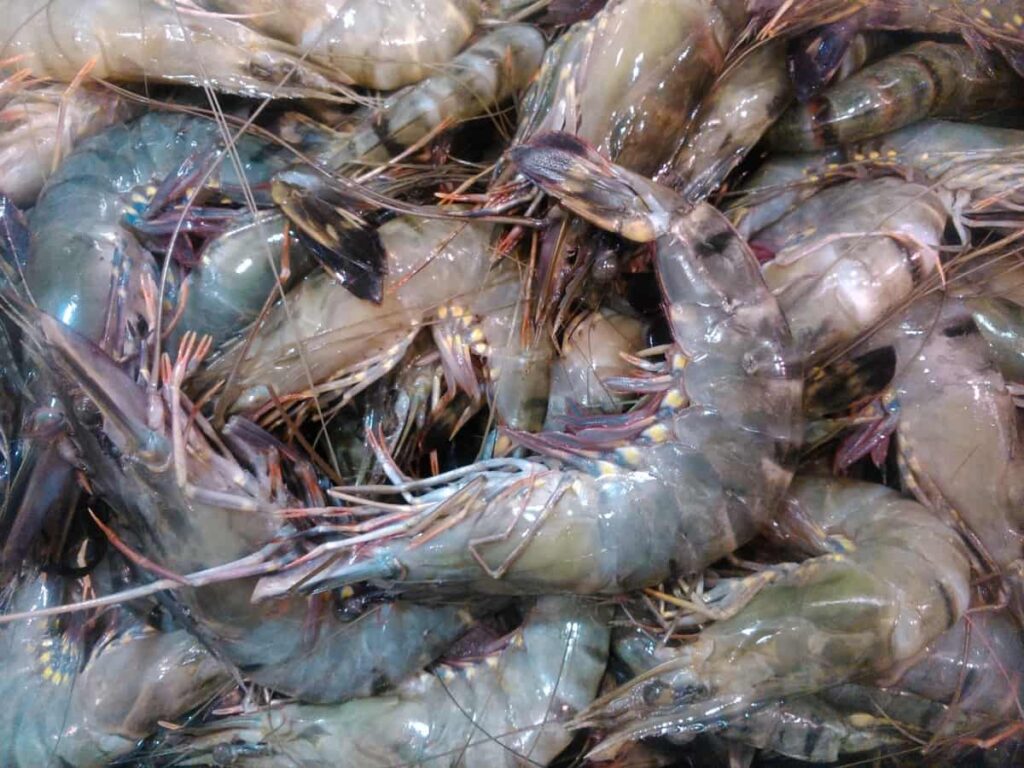
Shrimp farming business plan
What is shrimp farming?
Shrimp farming is a method of raising shrimp in an enclosed environment. This can be done in either fresh or salt water, but most shrimp farms are located in coastal areas where the two types of water meet. Shrimp is a popular seafood choice worldwide, so shrimp farming has become a multi-million-dollar industry. Many different methods can be used to farm shrimp. The most common practice is to use large ponds fed with seawater or freshwater.
The shrimp are then raised in these ponds until they reach maturity and can be harvested. Shrimp farming is a relatively new industry; as such, much research is still being done into the most efficient and effective methods of shrimp farming. However, several companies have already established themselves as leaders in the field, constantly innovating new ways to improve their shrimp farms.
The benefits of shrimp farming
Shrimp farming offers many benefits, including a consistent and reliable source of income, a high degree of flexibility in management and production, and the opportunity to be involved in an environmentally sustainable industry. IIn addition, incomefrom shrimp farming can be very consistent as long as the farm is managed well.
This is because consumers highly value shrimp, and there is always a demand for this delicacy. Furthermore, shrimp farms can be operated on a small scale, making them ideal for those who want to avoid committing to a large-scale agricultural operation. Shrimp farming is also relatively flexible in terms of production.
Farm owners can choose to focus on quantity or quality depending on the market demands. As a result, shrimp farmers can quickly adapt their business plans to changing conditions. Finally, shrimp farming is an environmentally sustainable industry. Shrimp farms typically have minimal negative impacts on ecosystems and can even improve water quality by filtering out pollutants.
The different types of shrimp farms
There are two main types of shrimp farms: intensive and extensive. High stocking densities, high input of energy and capital, and high yield per unit area characterize intensive shrimp farming. In contrast, extensive shrimp farming has low stocking densities, low intake of energy and capital, and low yield per unit area.
The significant difference between the two types of shrimp farms is the intensity of production. Intensive shrimp farms are operated under controlled conditions with a high management level, whereas extensive shrimp farms are less intensively managed with a lower input level. As a result, intensive shrimp farming usually requires a higher initial investment than extensive shrimp farming, but it can generate greater profits in the long term.
In case you missed it: How to Start Shrimp Farming in the Philippines: At Home, Indoors, Backyard, Pond Culture, Shrimp Types, Cost, Profits, and Guide for Vannamei
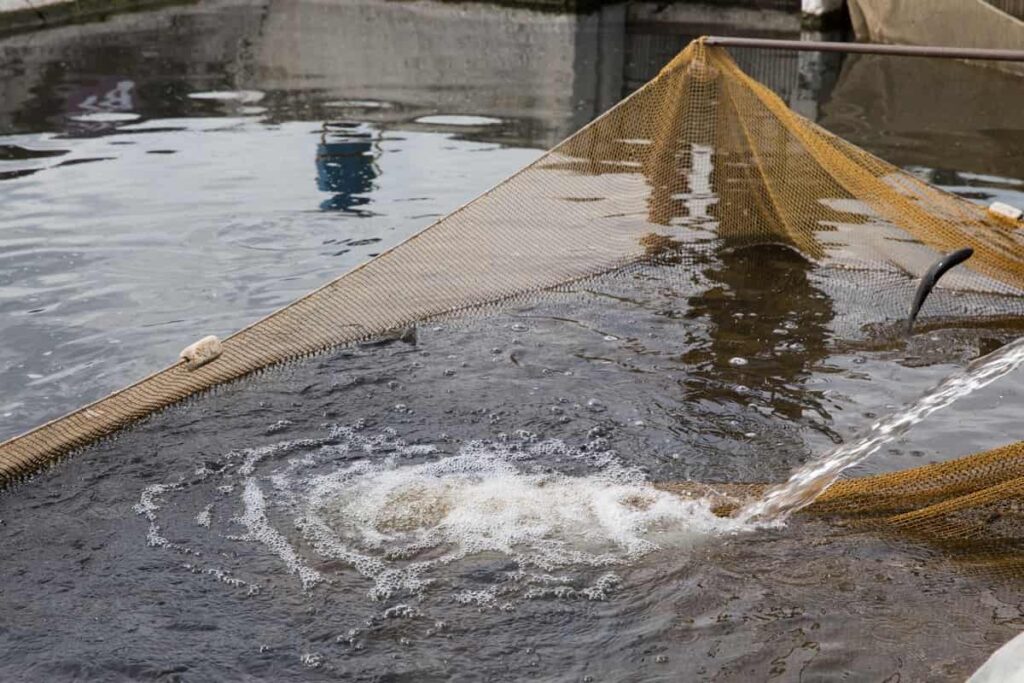
Nevertheless, some risks are associated with intensive shrimp farming, such as disease outbreaks and environmental pollution. Extensive shrimp farming is well suited to small-scale operations and can be less risky than intensive shrimp farming. However, it generally has lower productivity and profitability.
Equipment required for shrimp farming
- Ponds: You will need to construct earthen ponds or purchase pre-fabricated ponds. The pond size will depend on the number of shrimp you plan to raise.
- Aerators: You will need one or more to oxygenate the water.
- Feed: You will need a steady supply of food for your shrimp. This can be commercial shrimp feed or a homemade diet.
- Harvesting equipment: When it comes time to harvest your shrimp, you will need some essential equipment, including nets and coolers.
How to start a shrimp farm
Shrimp farming is lucrative but requires careful planning and a solid business plan. Here are some tips for starting your shrimp farm:
- Do your research. Shrimp farming is a complex business, so it’s important to do your homework before you get started. Read up on the subject, talk to other shrimp farmers, and attend trade shows and seminars.
- Choose the right location. Your shrimp farm will need access to fresh water, so choosing a site near a river or lake is important. The climate should also be warm enough to support shrimp growth.
- Build the right infrastructure. Your shrimp farm will need ponds, filtration systems, and aeration equipment. You’ll also need to build housing for your shrimp and staff.
- Stock your ponds with shrimp. You can buy juvenile shrimp from a hatchery or grow your own from eggs.
- Care for your shrimp properly. Shrimp need clean water and a healthy diet to thrive. Be sure to monitor your ponds closely and make any necessary adjustments to keep your shrimp healthy and happy.
Shrimp farming business plan template
As with any new business venture, you’ll need a solid business plan template to get your shrimp farming operation off the ground. This comprehensive guide will walk you through each step of creating a business plan for your shrimp farm, including conducting market research, writing a feasibility analysis, and outlining your financial goals. While shrimp farming can be lucrative, it’s important to remember that some inherent risks are involved.
Be sure to consult with an experienced aquaculture specialist before getting started to help minimize these risks. With a well-thought-out business plan in place, you can be on your way to success in the shrimp farming industry. If you are looking to start a shrimp farming business, there are certain things you will need to consider. First, your shrimp farming business plan should include the following:
- The cost of setting up your shrimp farm. This will consist of land, buildings, and equipment costs.
- The cost of shrimp feed and other supplies.
- The cost of labor. You will need to hire workers to help you with the day-to-day operations of your shrimp farm.
- The cost of marketing and advertising your shrimp farm. You will need to let people know about your business and attract customers.
- The expected return on investment (ROI). You can expect this amount from your shrimp farm over time.
In case you missed it: Shrimp Contract Farming in India: Companies, Agreement, Process, Profits, Benefits, and Risks
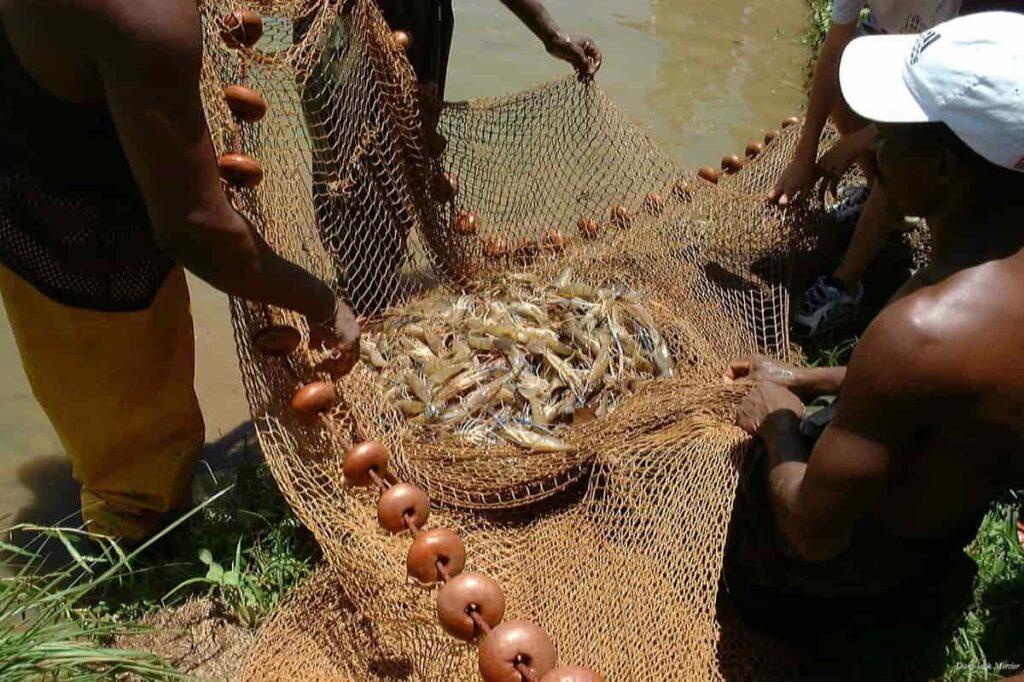
How long does shrimp take to farm?
It takes about two to three years for a shrimp to grow from a juvenile to an adult. Farming shrimp is thus a long-term investment, and the farmers must be patient to see returns on their investment.
What months are best for shrimp farming?
The best months for shrimp farming are typically from February to October when the climate is warm and there is little rainfall. However, shrimp farming requires a lot of water, so too much rain can disrupt the operation.
How often do shrimp need feeding?
Knowing how often to feed the shrimp in a shrimp farming business is important. Shrimp need to be fed 2-3 times a day. The amount of food they need will depend on the size of the shrimp and the type of food they are eating.
Indoor shrimp farming startup cost
The cost of setting up an indoor shrimp farm will vary depending on the size and scale of the operation. However, there are some basic costs that all shrimp farmers must consider when starting their business. These include the cost of land, construction, equipment, and staff. Land cost is one of the most important factors in setting up a shrimp farm. Shrimp farms require a large amount of space due to the ponds necessary for production.
Therefore, the cost of land depends on the location of the farm and the availability of water sources. Construction costs will also vary depending on the size and scale of the farm. Shrimp farms require specialized facilities and equipment to function properly. The construction cost will therefore be influenced by the type and number of buildings required and the type of equipment needed.
Staff costs are another important consideration for shrimp farmers. Shrimp farming is a labor-intensive business and therefore requires a significant workforce. The cost of staff will depend on their experience and expertise and the required number. In summary, the cost of setting up an indoor shrimp farm can vary widely depending on several factors. However, all farmers should consider land, construction, equipment, and staff costs when starting their business.
How profitable is shrimp farming?
Shrimp farming is a highly profitable business and one of the world’s best businesses. The average shrimp farm produces about 1,000kg of shrimp per year, which can be sold for an average price of $10 per kg. This means that the average shrimp farm generates an annual revenue of $10,000. However, there are a couple of things to keep in mind when considering the profitability of shrimp farming.
In case you missed it: How to Start a Shrimp Processing Plant in India: Equipment, Cost, and Profits
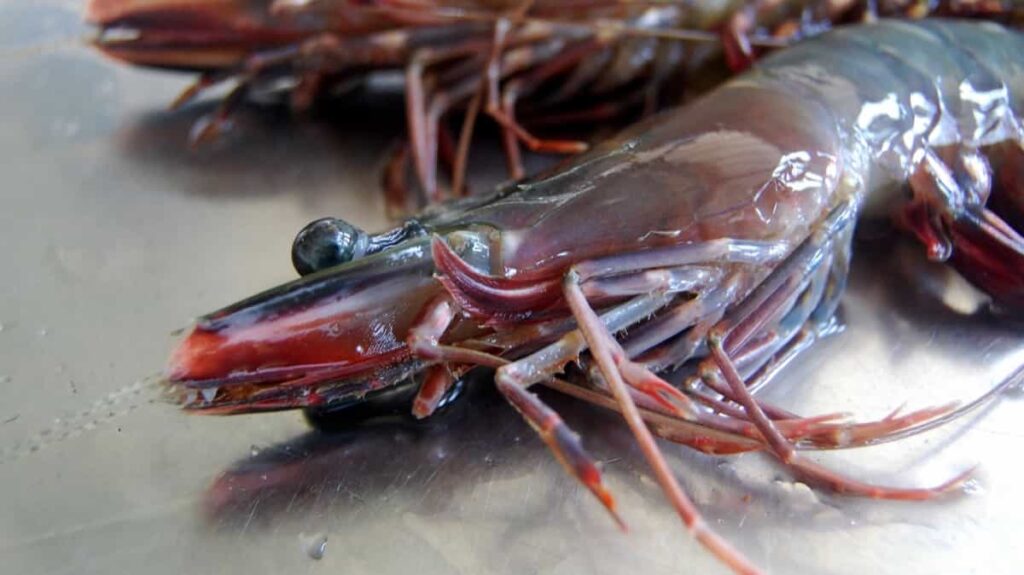
First of all, shrimp farms require a significant amount of initial investment. Setting up a shrimp farm can range from $5,000 to $20,000. Additionally, shrimp farms need to be located in areas with warm climates and access to salt water. Another thing to remember is that shrimp farming is a labor-intensive business. Shrimp farmers need to be able to provide their workers with housing and food and pay their salaries.
Salaries for shrimp farmers can range from $500 to $1,500 per month. Assuming all of these costs are considered, shrimp farming is still a highly profitable business. With an annual return on investment (ROI) of over 100%, it is one of the world’s most demanding and lucrative businesses.
At what age are shrimp harvested?
Shrimp are typically harvested at around 8 to 12 months of age. However, this can depend on the type of shrimp and the environment in which they are raised. For example, some shrimp species may be harvested as early as 6 months old, while others may only be ready for harvest once they are 18 months old. The size of the shrimp also affects when they are harvested, with larger shrimp typically being harvested later than smaller shrimp.
What type of soil is best for shrimp culture?
Many different types of soil can be used for shrimp culture, but not all soils are equally suitable. The ideal soil for shrimp farming is a sandy loam with a high organic content and good drainage. A sandy loam is a type of soil consisting of sand, silt, and clay particles. It has good drainage and aeration properties, which are important for the health of shrimp. High organic content is also important because it provides shrimp with the nutrients they need to grow and thrive.
Can I farm shrimp at home?
Yes, you can farm shrimp at home! For those interested in starting their own shrimp farming business, there are many things to consider. The first and foremost step is to choose the right location. Shrimp prefer warm water and plenty of sunlight, so a sunny spot near a river or ocean is ideal. You’ll also need to build or purchase tanks and ponds where your shrimp can live and grow. Once your location and tanks are set up, it’s time to start stocking your shrimp farm.
You can buy juvenile shrimp from a supplier or capture wild shrimp for breeding. Getting healthy, disease-free shrimp is important to start your farm on the right foot. Farming shrimp requires regular maintenance and care. You’ll need to monitor the temperature and quality of the water, feed your shrimp regularly, and keep an eye out for signs of illness or injury. But your shrimp farm can be a thriving business with proper care!
Which shrimp is easiest to breed?
To get into the shrimp farming business, you need to know which shrimp is easiest to breed. The most popular types of shrimp for farming are the Pacific white shrimp and the tiger shrimp. The Pacific white shrimp is native to the coasts of Chile, Peru, and Ecuador. They are a fast-growing species and can reach up to 12 inches in length.
In case you missed it: Common Shrimp/Prawn Diseases, Symptoms, Treatment: Check How this Guide Helps Shrimp Farmers
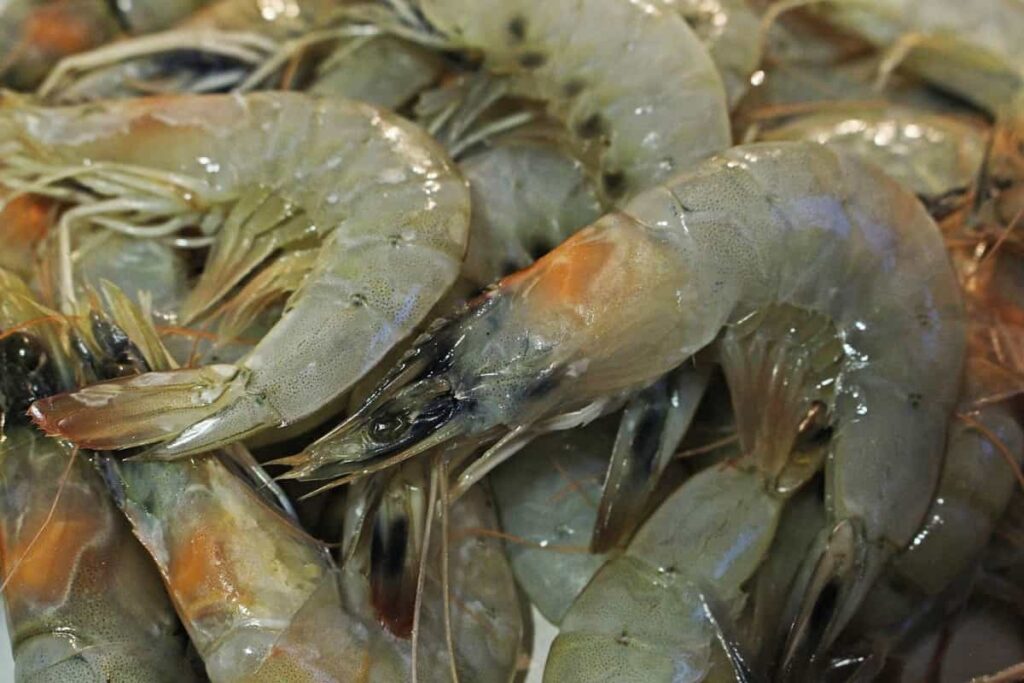
The Pacific white shrimp is easy to breed and has a high survival rate. The tiger shrimp is native to the coasts of Brazil, Uruguay, and Argentina. Tiger shrimp grow slightly slower than Pacific white shrimp but can still reach up to 10 inches in length. Tiger shrimp are also easy to breed and have a high survival rate.
How many eggs do shrimp lay at a time?
Shrimp lay anywhere from 50 to 1,000 eggs at a time, with an average of 200. The exact number depends on the shrimp species, age, water temperature, and quality. Eggs are typically laid in groups called clutches, and each clutch can contain up to 10,000 eggs.
How much water does a shrimp farm need?
The main factor determining the amount of water needed for shrimp farming is the salinity or saltiness of the water. The water must have a certain salinity level to grow healthy and productive shrimp. The ideal range for salinity is between 20 and 40 parts per thousand (ppt). Usually, seawater will have an average salinity of 35 ppt, so it can be used for shrimp farming without adding additional salt. However, if the salinity levels are too low, the shrimp will not be able to thrive and may even die.
Farmers must constantly pump new seawater and add salt to the ponds to maintain the required salinity level. The water needed will depend on the size, the number of ponds, and the evaporation rate. In a tropical climate, it is not uncommon for a shrimp farm to use up to 10 million liters (2.6 million gallons) of water per day.
Common shrimp diseases and their control
Several shrimp diseases can affect your shrimp farm, and it is important to be aware of them to take steps to prevent them. Some of the most common shrimp diseases include:
White spot disease
This is caused by a virus and is one of the most serious shrimp diseases. It can lead to mass die-offs of shrimp and is difficult to control. Prevention is the best control method, including using clean water, quarantine measures, and good hygiene practices.
Vibrio disease
This is caused by bacteria and can affect wild and farmed shrimp. It can cause death in young shrimp, and adults may also be affected if the infection is severe. Treatment options are available, but prevention is the best method of control. Good hygiene practices and water quality management are essential.
In case you missed it: Bamboo Farming Business Plan: How Bamboo Could be the Next Eco-Friendly Business
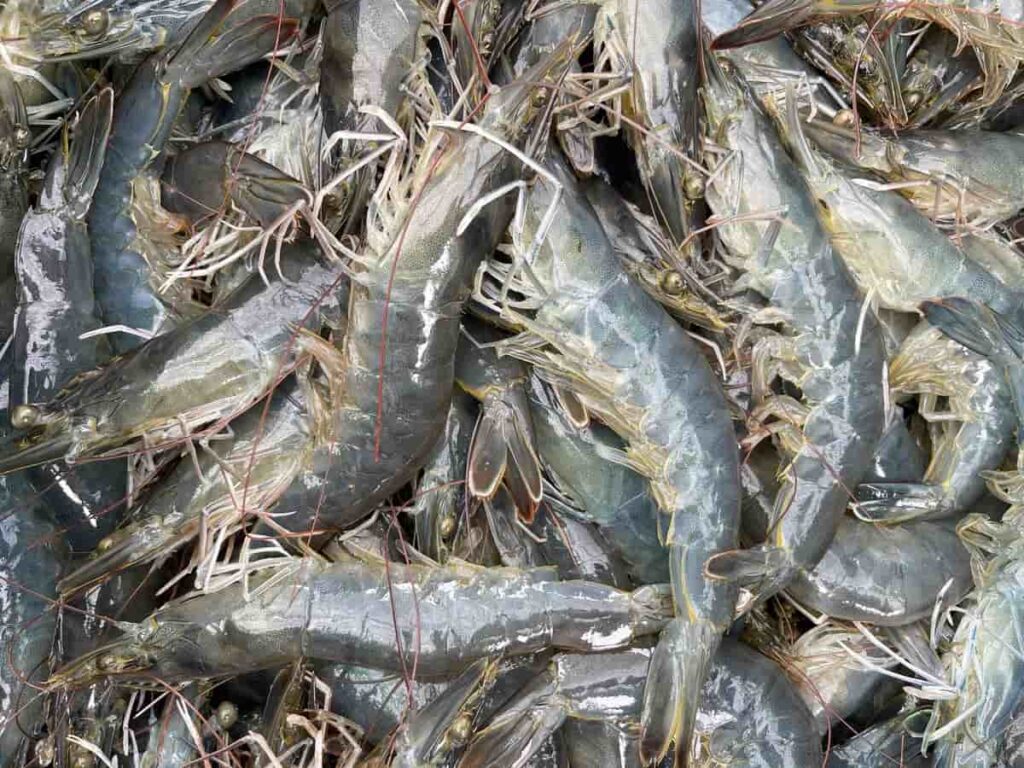
Black gill disease
This is caused by a fungus and affects the gills of shrimp, causing them to turn black. It can lead to respiratory distress and death in severe cases. Treatment options are available, but prevention is the best control method. Good water quality management and hygiene practices are essential. These are some of the most common shrimp diseases you may encounter on your farm. It is important to know about these shrimp diseases so that you can take action to prevent them from occurring or spreading.
If you plan to setup a shrimp farm in your backyard, watch this video:
Conclusion
The shrimp farming business plan is a comprehensive document that outlines everything you need to know about starting and running a successful shrimp farm. It covers all the essential aspects of shrimp farming, from finding the right location to building the necessary infrastructure, obtaining the proper permits, and marketing your products. This business plan will be a valuable resource for anyone interested in entering the shrimp farming industry.
- How to Raise Pigs in Your Own Backyard: A Comprehensive Guide
- Budget Friendly Sheep Shed Ideas: Cheap and Low-Cost Tips
- How Much Do Cattle Farmers Make: Revenue Streams in Cattle Farming
- Management Pests and Diseases in Your Cotton Field
- Sheep Farming Business Plan for Beginners
- Aquaponic Farming at Home: A Step-By-Step Guide
- Profitable Village Farming Business Ideas in 2024
- High-Yield Aquaculture: Fast-Growing Fish for Farming
- Effective Fish Pond Construction Techniques for Beginners
- Irrigation and Water Management in Pineapple Farming
- Blossom to Harvest: Mastering Flowering and Pollination in Papaya Farming
- Pig Fattening Essentials: From Selection to Sale for Beginners
- Raising Wagyu Cattle: A Complete Guide for Premium Beef Production
- Soil Types and Their Water Holding Capacity
- Optimizing Irrigation Schedules for Coconut Groves for Enhanced Yield
- Espresso Your Garden: Coffee Grounds for Healthier Acid-Loving Plants
- The Best Soil Mix for Snake Plants: How to Mix Your Own Snake Plant Soil
- Green Thumb Success: Expert Tips for Cultivating Greenhouse Beans All Year Round
- Bloom All Year Round: The Ultimate Guide to Indoor Hyacinth Care
- Eco-Friendly Gardening: How to Make Liquid Fertilizer from Kitchen Waste
- Ultimate Guide to Grow Anise in Pots: Explore Seed Propagation to Harvesting
- Guide to Raising Chester White Pigs: Discover Breed Facts to Growth Management
- Mastering the Elegance: The Ultimate Guide to Weeping Cherry Tree Care, Planting, and Maintenance
- Ultimate Guide to Planting Garlic in Grow Bags: Growing Strategies for Beginners
- How to Fix Spider Plant Leaf-Related Problems: Natural and Organic Remedies
- 10 Reasons Why Your Tulsi Plant is Shedding Leaves: Home Remedies and Solutions
- Optimizing Growth and Yield: The Advantages of Palm Bunch Ash Fertilizer
- Utilizing Neem Oil Extract as a Natural Pesticide for Hydrangea
- From Soil to Harvest: Various Ways in Which Farmers Can Use AI Tools
- Steps to Encourage and Induce Citrus Flowers: A Comprehensive Guide
- How to Fix Snake Plant Leaf-Related Issues: Natural and Organic Remedies
- Transform Your Garden into a Fragrant Oasis with Raat Ki Rani (Night Blooming Jasmine)
- Discover the Ideal Chicken Breeds for Philippine Farms
- How to Create a Poultry Egg Farm Business Plan for Profits
- Grow Lemon Cucumbers Like a Pro: Insider Techniques for Bountiful Yields
- Ultimate Guide to Caring for Your Pink Princess Philodendron: Tips for Thriving Variegation
